From the ![]() Pizza Issue
Pizza Issue
The first step of researching New York City pizza is preparing yourself for a piping hot debate. No matter who you talk to in the pie and slice game, you’re signing up for an opinionated serving of family feuds, insider trading, and drama worthy of a daytime soap. But beyond the he-said, she-said and questions of who deserves credit for what, one incontestable fact remains: there’s just something about the NYC slice.
From lunch on-the-go to drunken late-night eats, slice pizza is intimately woven into the city’s fabric. Every few blocks in Manhattan—and only a bit further in Brooklyn or Queens—you’re bound to run into a grab-n-go shop. The most celebrated names in the old guard—Joe’s or DiFara, for example—ring with the time-worn familiarity of local heroes. But in the past decade, an increasing number of noteworthy upstarts have thrown their hat in the ring—Prince Street, Best Pizza and Scarr’s, to name a few.
In Greenpoint, an already infamous pizza personality—Paul Giannone of Paulie Gee’s—recently extended his sit-down, restaurant-style empire with his first ever slice shop. Located on an unassuming corner opposite the Brooklyn Expo Center, the shop is a collaboration between Giannone and Andrew Brown, who previously ran the kitchen at Paulie Gee’s flagship (just a few blocks away) for over four years. There, customers would regularly ask for takeout pies, which Giannone served reluctantly until eliminating them altogether. “The [thin crust] pizza at the flagship doesn’t travel well. You put it in a box, and it gets destroyed,” he tells me. “After doing takeout for four years, I decided—financially—I could choose not to. The community was unhappy.”
That community is now reaping the benefits of a retro, 1970s-inspired shop expressly designed to craft pies that travel well and reheat deliciously at home. “The main difference is the crust. In a wood-fired pizzeria, the dough is soft and cooked at one thousand degrees. You can’t cook a pie at that temperature and make it crisp,” Giannone explains. At the slice shop, his crust is firmer—to enable that classic on-the-go fold. He also avoids mozzarella at his flagship, but for the slice shop, low moisture “mozz” is the go-to cheese. “Only the sauce is the same: milled tomatoes cooked with olive oil, garlic, onion and basil.”
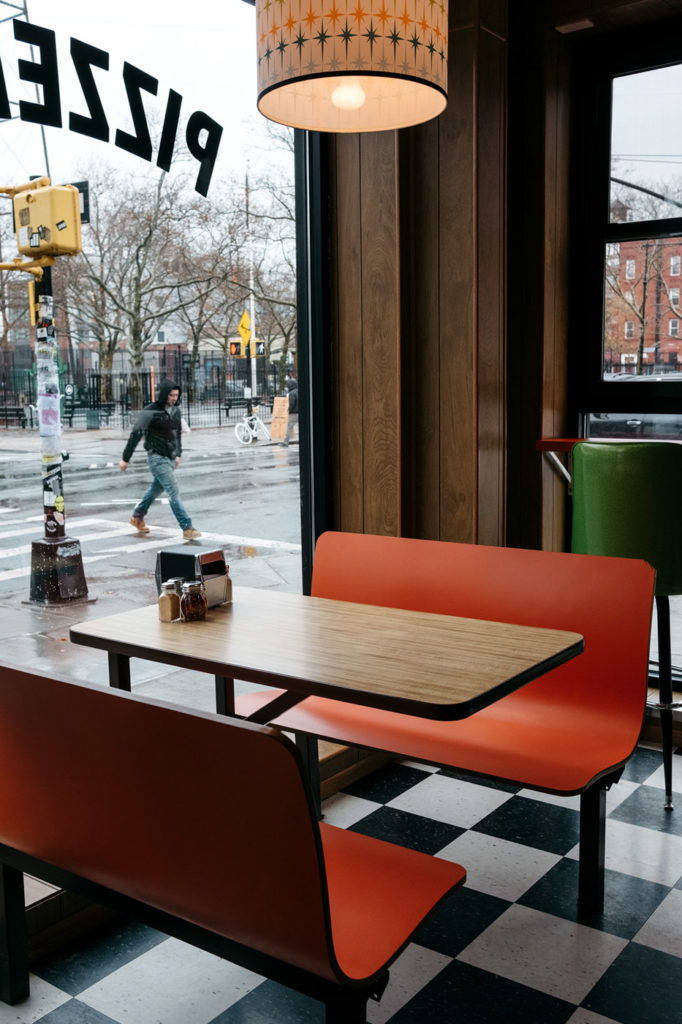
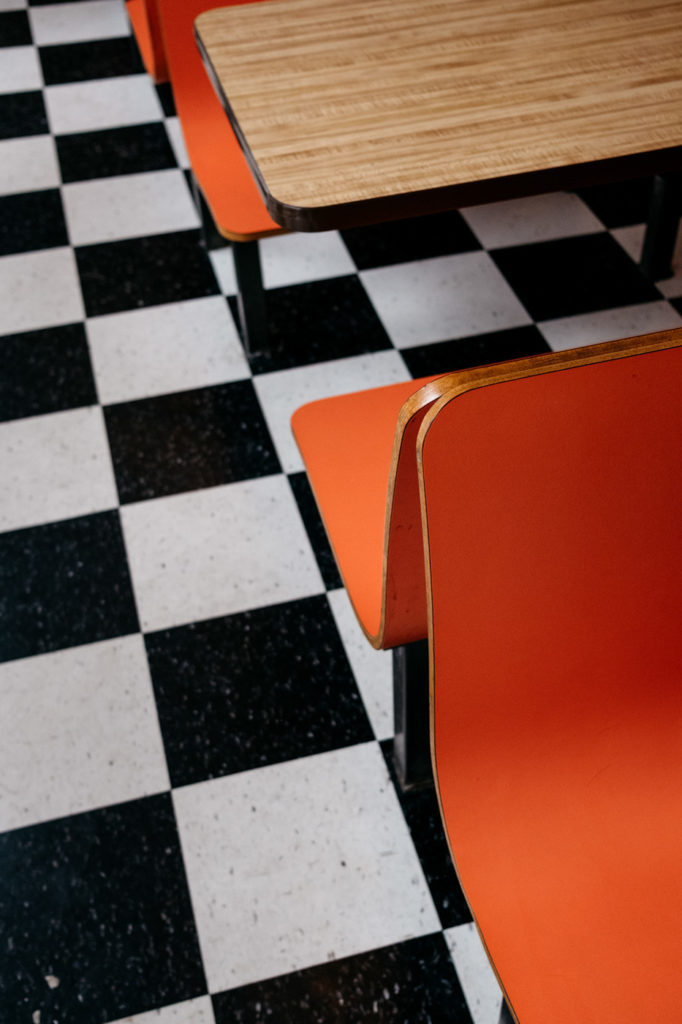
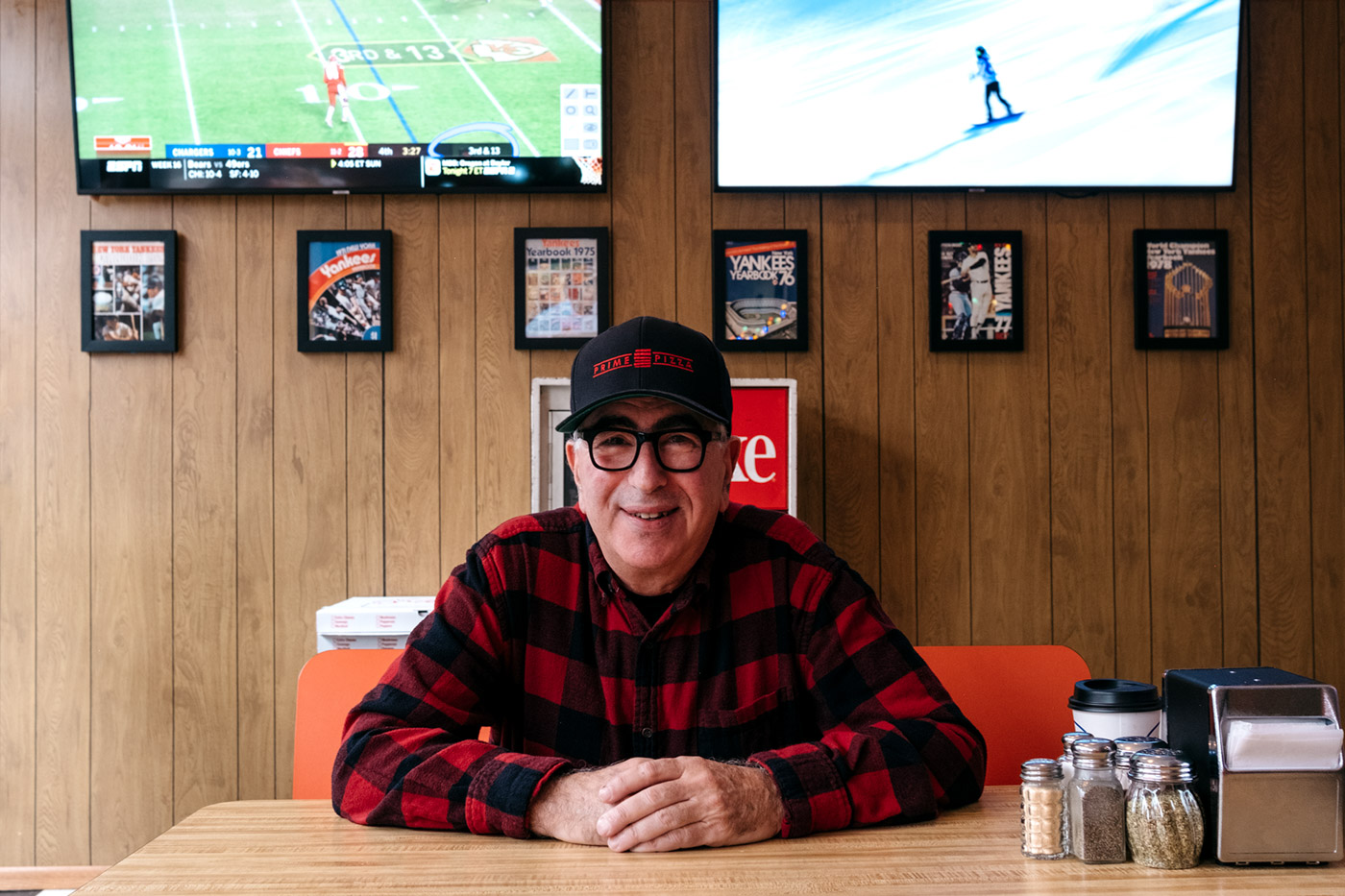
According to Miriam Weiskind of Scott’s Pizza Tours, the invention of a reheatable, travel-ready slice was an iconic moment in New York food history. “Originally what you see in New York City is coal-fired pizzas, which are smaller slices with a thin crust and a slight chew,” Weiskind says. “In the post-1940s era, we get gas deck ovens, and the slices become larger and longer. By the 1970s, the slice has started to explode in popularity, using part-skim, low moisture cheese that can easily be reheated and melted back down.”
Those 1970s slices were also designed to be folded. “What makes it a New York slice is that we don’t have cars,” Weiskind explains. “We walk up, grab an oversized, thin slice of pizza, and eat it on our walk home.” That convenience made already desirable pizza into a true city staple, especially for students, artists and other budget-conscious eaters drawn to the city during what many consider its cultural heyday.
A few stalwarts from that era remain, including Luigi’s on 5th Avenue in South Park Slope. Opened in 1973 by a recent transplant from Italy, the shop quickly became a central hub for the neighborhood, slinging the day’s gossip alongside its classic slice. Second generation owner Gio Lonzo recalls, “In the 1950s and ‘60s, people started opening slice shops to make money. You can never make the money on wood-fired pizzas that you can by-the-slice—even at my father’s opening price of thirty cents for a slice and a Coke. That’s why so many people are returning to this style.” The best shops, including Luigi’s, will also stick to classic methods: an overnight fermentation for the crust, a simple sauce of crushed tomatoes, and imported low-moisture mozzarella. It’s those small—but easily overlooked—details that keep a shop in business for more than fifty years.
As one of the 1970s originals, Luigi’s also boasts the authentic retro vibe that more recent pizza outposts—including Paulie Gee’s Slice Shop—emulate with their throwback decor. For Giannone, many of these furnishings were sourced serendipitously. “There’s a spot in Martinsville, New Jersey where I’ve been taking my kids since they were born,” he tells me. “I showed the owner a picture of what I had in mind and he said, ‘I have those booths! My wife is going to kill me if I don’t get rid of them.’” One $68 U-Haul rental later, Giannone had acquired the very benches on which his kids grew up eating pizza.
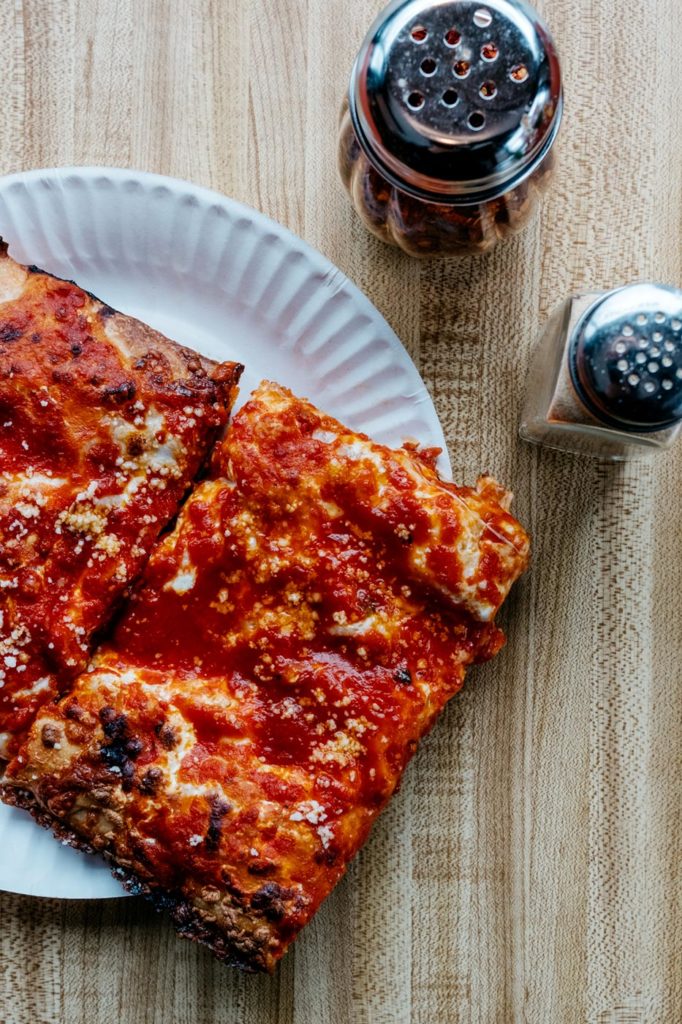
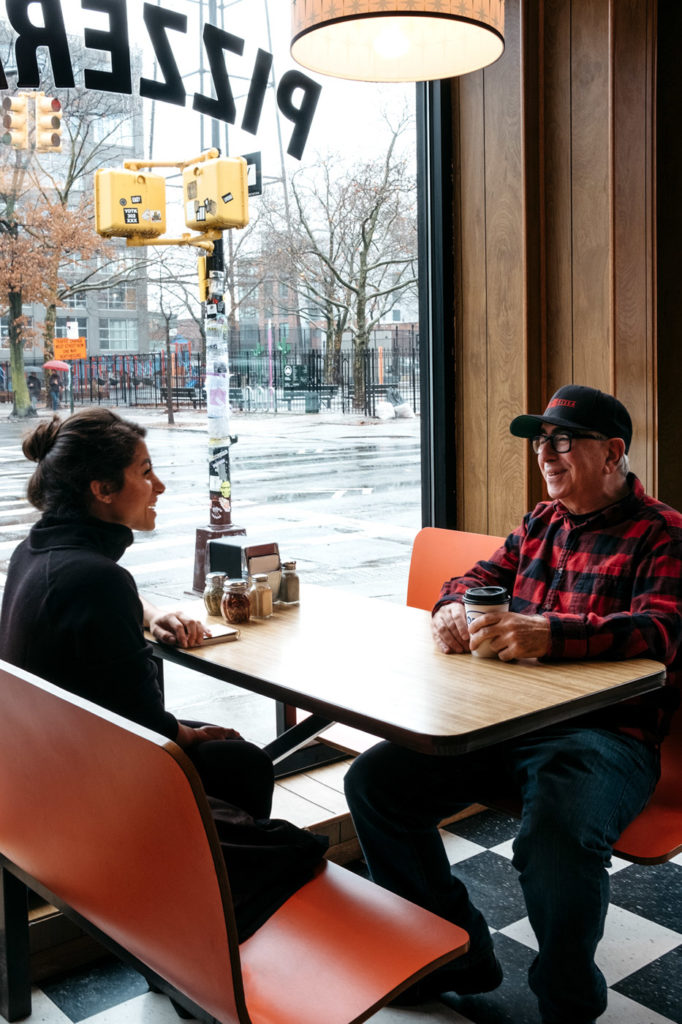
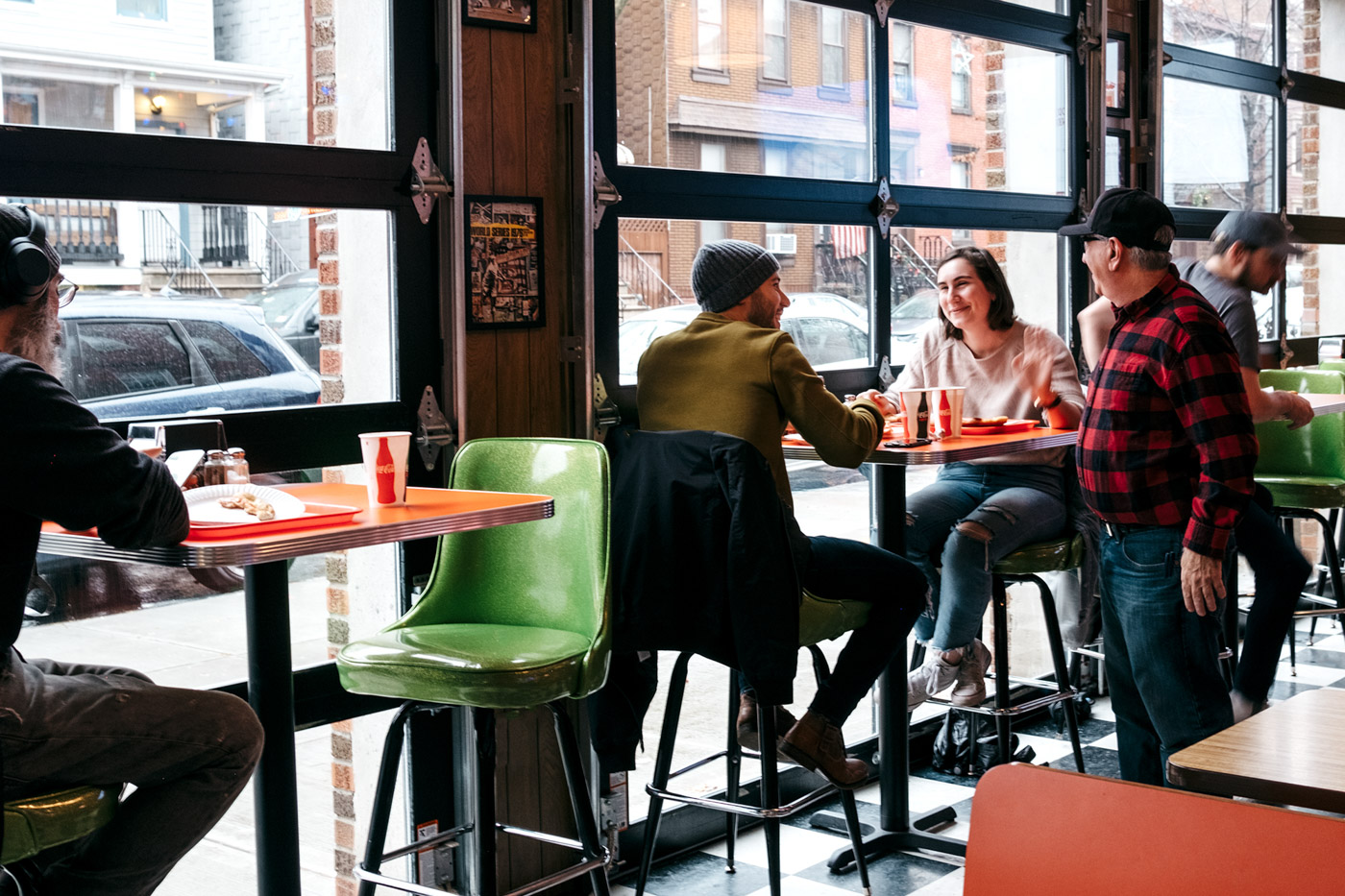
The rest of the shop continues to riff on slice shop nostalgia, with checkerboard floors, wood paneling, bright orange booths, and neon green barstools. Giannone also insisted on a vintage Cornelius Jet Spray juice machine and classic baker’s deck ovens, while his sons sourced an Atari system for extra retro flair. A refurbished Coke machine harkens to an era before soda shaming, while Giannone’s personal collection of Yankee memorabilia underscores his hometown pride—including signs for Ballantine beer, which sponsored the team in the 1960s.
If Paulie Gee’s interior is a throwback, the pies are the result of a half-century of pizza progress. The Mootz is a thin, foldable ode to quality cheese, featuring its namesake mozzarella, fresh garlic, and pecorino romano. The Hellboy features pepperoni and a sweet-n-spicy squeeze of Mike’s Hot Honey (a Brooklyn-born condiment Giannone personally supported by providing startup space in his flagship’s commercial kitchen). But the real must-try is Paulie’s Sicilian-style slice, the Freddy Prince.
Inspired by two different pizzerias, the Freddy Prince is a testament to Giannone’s own relentless slice research. The idea for a sesame seed bottom comes from Freddy’s in Whitestone, New York, while the “reverse Sicilian” format (layering sauce on top of cheese) pays homage to Prince Street Pizza in Manhattan. Adorning a remarkably airy focaccia dough, those toasty seeds and the bright, punchy sauce yield a slice that’s as revelatory as it is nostalgic.
It’s that nostalgia—slightly improved—that Giannone seeks with every slice. “You know about the Pizza Cognition Theory?” he asks. “It’s the idea that the first pizza you try will always be the pizza that tastes best to you.” Watching the faces of Paulie Gee’s customers, he seems to be onto something. For all the gourmet, restaurant-style pizzerias we have in New York City, nothing hits the spot quite like a slice.

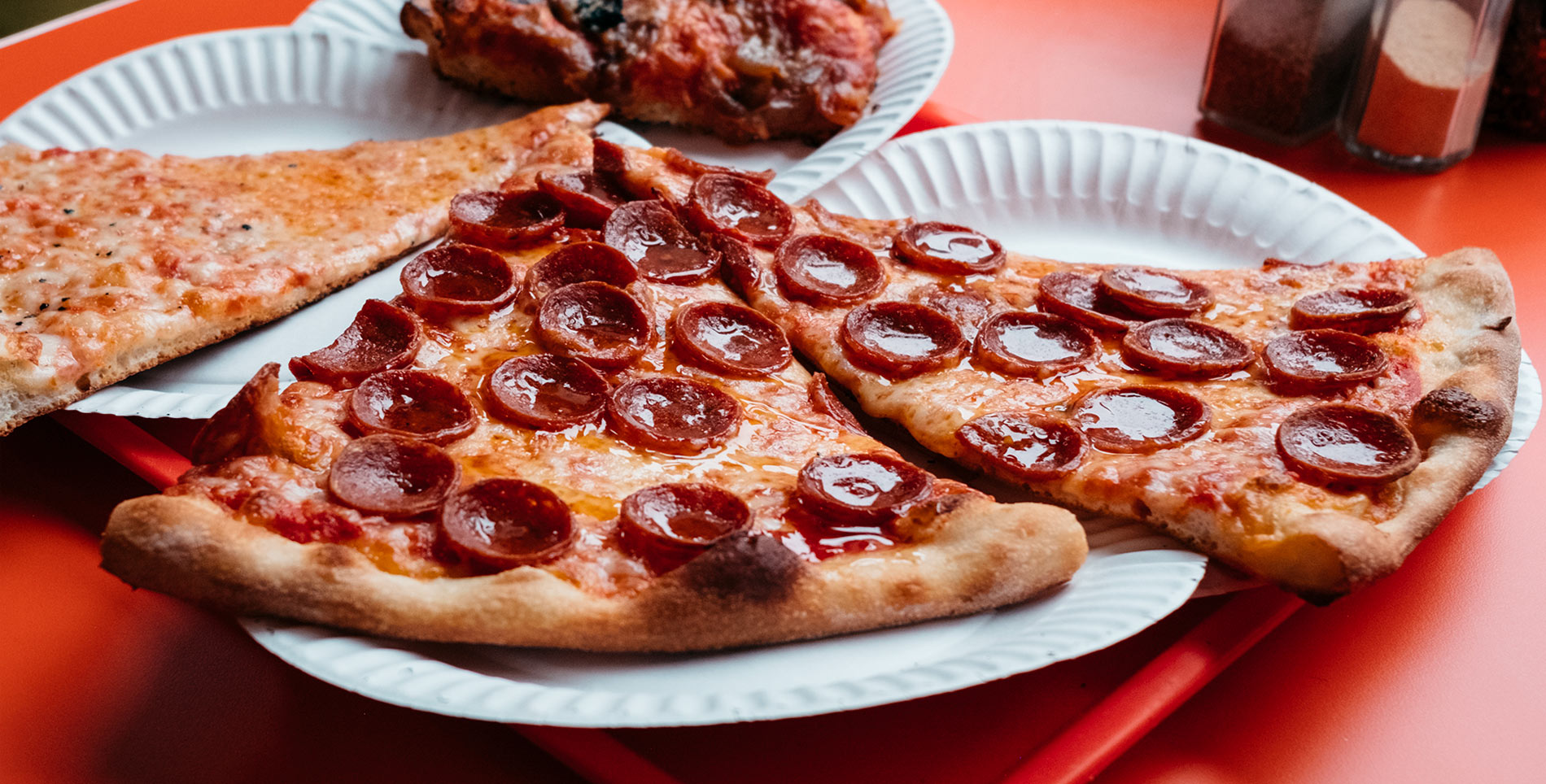

Our comments section is for members only.
Join today to gain exclusive access.